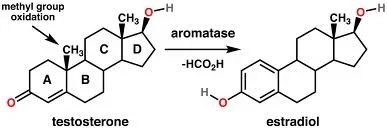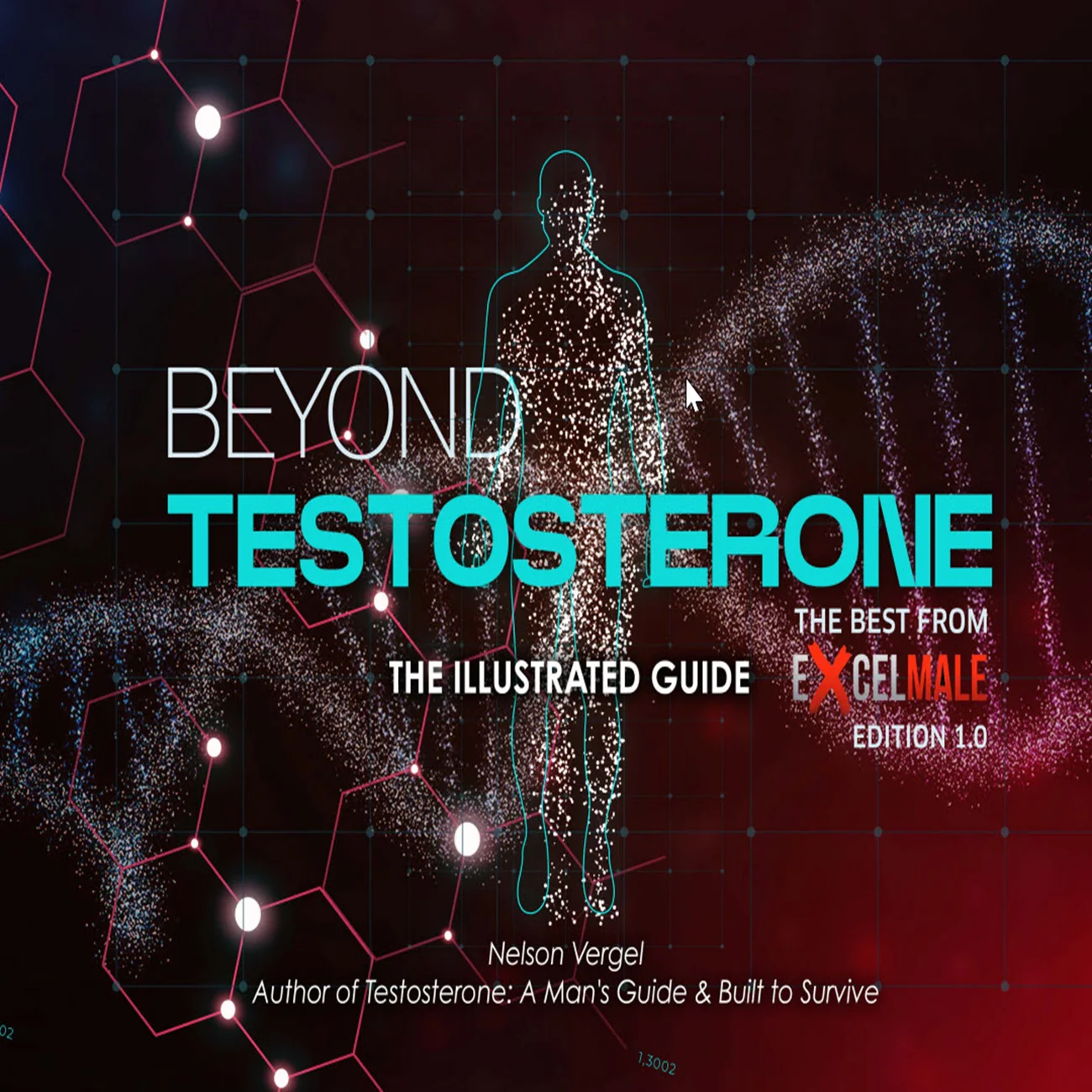Nelson Vergel
Founder, ExcelMale.com
The abstract below is from a systematic review and meta-analysis concerning the impact of aromatase inhibitors (AIs) on male sexual desire. The study investigated whether these medications, sometimes used for male hypogonadism due to their effect on the hypothalamus-pituitary-testis axis, improve sexual function, particularly libido. Researchers analyzed data from nine studies, encompassing 457 subjects, and concluded that AI use significantly increased the risk of low libido. The findings further suggest an inverse relationship between estradiol (E2) levels and the risk of low sexual desire, indicating that AIs are not a suitable treatment for sexual dysfunction in hypogonadal men.
Abstract:
DOI:10.1093/jsxmed/qdaf077.118Corpus ID: 278458394
ROLE OF AROMATASE INHIBITORS ON SEXUAL DESIRE IN MEN: A SYSTEMATIC REVIEW AND META-ANALYSIS
G. Corona, G. Rastrelli, +3 authors M. Maggi
Published in Journal of Sexual Medicine 1 May 2025
TLDR
Overall, the use of AIs significantly increased the risk of low libido, up to 44%
Abstract
Considering that the use of aromatase inhibitors (AIs) has been associated with an increase in hypothalamus pituitary testis axis (HPT) activity these medications were also tried for the treatment of male hypogonadism. However, their effect on male sexual function, and, libido in particular, has been poorly investigated. An extensive Medline, Embase and Cochrane search was performed. All studies reporting data on sexual function after the use of AIs were considered. The search, which accrued data from January 1, 1969, up to October 31st, 2023, was restricted to English-language articles and studies of human participants. Overall, 9 studies were collected including 457 subjects with a mean age and mean body mass index (BMI) of 42.9 years and 32.1 kg/m2. Overall, the use of AIs significantly increased the risk of low libido, up to 44%. Interestingly, meta-regression analysis showed that the risk of low sexual desire was inversely related to estradiol (E2) levels and increased as a function of the T/E2 ratio at the endpoint. The latter findings were confirmed after the adjustment for age and BMI (r = -0.370 and 2.981 for E2 and T/E2 respectively; both p < 0.0001). ARis do not represent a valid therapeutic option in hypogonadal men with sexual dysfunction. none.

Date of Publication: Likely presented or published sometime after October 31st, 2023 (as the search accrued data up to this date).
Key Themes and Findings:
This systematic review and meta-analysis investigates the largely under-explored impact of aromatase inhibitors (AIs) on male sexual function, particularly libido, in the context of their use for male hypogonadism. Despite AIs being considered for increasing hypothalamus-pituitary-testis (HPT) axis activity, the findings strongly suggest that they are not a suitable treatment for hypogonadal men experiencing sexual dysfunction.
1. Aromatase Inhibitors Increase the Risk of Low Libido:
The most significant finding is that the use of AIs is directly associated with a substantial increase in the risk of low libido in men. The study found that:
2. Inverse Relationship Between Estradiol (E2) Levels and Low Sexual Desire:
The study identified a critical link between estradiol (E2) levels and the risk of low sexual desire. This relationship is inverse, meaning as E2 levels decrease, the risk of low libido increases.
3. Direct Relationship Between Testosterone/Estradiol (T/E2) Ratio and Low Sexual Desire:
Conversely, the study found a direct relationship between an increasing T/E2 ratio and the risk of low sexual desire. As the T/E2 ratio rises (often due to decreased E2 and/or increased T from AI activity), the likelihood of experiencing low libido also increases.
4. AIs are Not a Valid Therapeutic Option for Male Hypogonadism with Sexual Dysfunction:
Based on the cumulative evidence, the authors draw a definitive conclusion regarding the clinical utility of AIs for this patient population:
Study Demographics and Methodology:
This research provides crucial evidence for clinicians treating male hypogonadism. It strongly advises against the use of aromatase inhibitors to address sexual dysfunction, particularly low libido, in this population. The findings underscore the importance of maintaining optimal estradiol levels, or at least a healthy T/E2 balance, for male sexual desire, rather than solely focusing on increasing testosterone. This challenges previous assumptions or practices where AIs might have been considered to indirectly improve libido by boosting testosterone.
FAQs:
What is the primary focus of the systematic review and meta-analysis on aromatase inhibitors (AIs) in men?
The primary focus of the systematic review and meta-analysis is to investigate the effect of aromatase inhibitors (AIs) on male sexual function, specifically libido, in men, especially those with hypogonadism. While AIs have been considered for treating male hypogonadism due to their effect on the hypothalamus-pituitary-testis (HPT) axis, their impact on sexual desire has been underexplored.
How was the research conducted to gather data for the study?
The researchers conducted an extensive search across Medline, Embase, and Cochrane databases. They looked for studies reporting data on sexual function after AI use, specifically between January 1, 1969, and October 31, 2023. The search was limited to English-language articles and studies involving human participants.
What were the key characteristics of the study population?
The study aggregated data from 9 different studies, encompassing a total of 457 subjects. The average age of these participants was 42.9 years, and their mean body mass index (BMI) was 32.1 kg/m2.
What was the overall effect of aromatase inhibitors on male libido?
The study found that the use of aromatase inhibitors significantly increased the risk of low libido in men, with the risk rising by up to 44%. This suggests a negative impact on sexual desire.
What specific hormonal changes were linked to the risk of low sexual desire?
Meta-regression analysis revealed a strong inverse relationship between the risk of low sexual desire and estradiol (E2) levels. In other words, as E2 levels decreased, the risk of low sexual desire increased. Conversely, the risk of low sexual desire increased as a function of the testosterone (T) to estradiol (E2) ratio at the endpoint. These findings remained significant even after adjusting for age and BMI.
What is the significance of the findings regarding estradiol (E2) and the T/E2 ratio?
The findings regarding estradiol and the T/E2 ratio are crucial because they suggest that maintaining adequate estradiol levels, or a balanced T/E2 ratio, is important for preserving sexual desire in men. The inverse relationship with E2 and the direct relationship with the T/E2 ratio indicate that disrupting this hormonal balance through AI use can negatively impact libido.
What is the main conclusion drawn from this systematic review and meta-analysis regarding the use of AIs for hypogonadism?
The main conclusion is that aromatase inhibitors (AIs) do not represent a valid therapeutic option for hypogonadal men who are experiencing sexual dysfunction, particularly low libido. Despite their potential impact on the HPT axis, their negative effect on sexual desire outweighs any potential benefits in this context.
Were there any conflicts of interest reported by the authors?
No conflicts of interest were reported by the authors of the study.
Abstract:
DOI:10.1093/jsxmed/qdaf077.118Corpus ID: 278458394
ROLE OF AROMATASE INHIBITORS ON SEXUAL DESIRE IN MEN: A SYSTEMATIC REVIEW AND META-ANALYSIS
G. Corona, G. Rastrelli, +3 authors M. Maggi
Published in Journal of Sexual Medicine 1 May 2025
TLDR
Overall, the use of AIs significantly increased the risk of low libido, up to 44%
Abstract
Considering that the use of aromatase inhibitors (AIs) has been associated with an increase in hypothalamus pituitary testis axis (HPT) activity these medications were also tried for the treatment of male hypogonadism. However, their effect on male sexual function, and, libido in particular, has been poorly investigated. An extensive Medline, Embase and Cochrane search was performed. All studies reporting data on sexual function after the use of AIs were considered. The search, which accrued data from January 1, 1969, up to October 31st, 2023, was restricted to English-language articles and studies of human participants. Overall, 9 studies were collected including 457 subjects with a mean age and mean body mass index (BMI) of 42.9 years and 32.1 kg/m2. Overall, the use of AIs significantly increased the risk of low libido, up to 44%. Interestingly, meta-regression analysis showed that the risk of low sexual desire was inversely related to estradiol (E2) levels and increased as a function of the T/E2 ratio at the endpoint. The latter findings were confirmed after the adjustment for age and BMI (r = -0.370 and 2.981 for E2 and T/E2 respectively; both p < 0.0001). ARis do not represent a valid therapeutic option in hypogonadal men with sexual dysfunction. none.
Briefing Document: The Impact of Aromatase Inhibitors on Male Sexual Desire
Source: Excerpts from "qdaf077.118 (1).pdf" - "ROLE OF AROMATASE INHIBITORS ON SEXUAL DESIRE IN MEN: A SYSTEMATIC REVIEW AND META-ANALYSIS" by Corona et al.Date of Publication: Likely presented or published sometime after October 31st, 2023 (as the search accrued data up to this date).
Key Themes and Findings:
This systematic review and meta-analysis investigates the largely under-explored impact of aromatase inhibitors (AIs) on male sexual function, particularly libido, in the context of their use for male hypogonadism. Despite AIs being considered for increasing hypothalamus-pituitary-testis (HPT) axis activity, the findings strongly suggest that they are not a suitable treatment for hypogonadal men experiencing sexual dysfunction.
1. Aromatase Inhibitors Increase the Risk of Low Libido:
The most significant finding is that the use of AIs is directly associated with a substantial increase in the risk of low libido in men. The study found that:
- "Overall, the use of AIs significantly increased the risk of low libido, up to 44%."
2. Inverse Relationship Between Estradiol (E2) Levels and Low Sexual Desire:
The study identified a critical link between estradiol (E2) levels and the risk of low sexual desire. This relationship is inverse, meaning as E2 levels decrease, the risk of low libido increases.
- "Interestingly, meta-regression analysis showed that the risk of low sexual desire was inversely related to estradiol (E2) levels and increased as a function of the T/E2 ratio at the endpoint."
- "The latter findings were confirmed after the adjustment for age and BMI (r = -0.370... for E2...; both p<0.0001)."
3. Direct Relationship Between Testosterone/Estradiol (T/E2) Ratio and Low Sexual Desire:
Conversely, the study found a direct relationship between an increasing T/E2 ratio and the risk of low sexual desire. As the T/E2 ratio rises (often due to decreased E2 and/or increased T from AI activity), the likelihood of experiencing low libido also increases.
- "...the risk of low sexual desire... increased as a function of the T/E2 ratio at the endpoint."
- "The latter findings were confirmed after the adjustment for age and BMI (r = ...2.981 for T/E2 respectively; both p<0001)."
4. AIs are Not a Valid Therapeutic Option for Male Hypogonadism with Sexual Dysfunction:
Based on the cumulative evidence, the authors draw a definitive conclusion regarding the clinical utility of AIs for this patient population:
- "ARis do not represent a valid therapeutic option in hypogonadal men with sexual dysfunction."
Study Demographics and Methodology:
- Scope: Systematic review and meta-analysis of studies reporting data on sexual function after AI use.
- Search Parameters: Medline, Embase, and Cochrane databases; January 1, 1969, to October 31st, 2023; English-language articles; human participants.
- Included Studies: 9 studies, comprising 457 subjects.
- Subject Demographics: Mean age of 42.9 years and mean BMI of 32.1 kg/m2.
This research provides crucial evidence for clinicians treating male hypogonadism. It strongly advises against the use of aromatase inhibitors to address sexual dysfunction, particularly low libido, in this population. The findings underscore the importance of maintaining optimal estradiol levels, or at least a healthy T/E2 balance, for male sexual desire, rather than solely focusing on increasing testosterone. This challenges previous assumptions or practices where AIs might have been considered to indirectly improve libido by boosting testosterone.
FAQs:
What is the primary focus of the systematic review and meta-analysis on aromatase inhibitors (AIs) in men?
The primary focus of the systematic review and meta-analysis is to investigate the effect of aromatase inhibitors (AIs) on male sexual function, specifically libido, in men, especially those with hypogonadism. While AIs have been considered for treating male hypogonadism due to their effect on the hypothalamus-pituitary-testis (HPT) axis, their impact on sexual desire has been underexplored.
How was the research conducted to gather data for the study?
The researchers conducted an extensive search across Medline, Embase, and Cochrane databases. They looked for studies reporting data on sexual function after AI use, specifically between January 1, 1969, and October 31, 2023. The search was limited to English-language articles and studies involving human participants.
What were the key characteristics of the study population?
The study aggregated data from 9 different studies, encompassing a total of 457 subjects. The average age of these participants was 42.9 years, and their mean body mass index (BMI) was 32.1 kg/m2.
What was the overall effect of aromatase inhibitors on male libido?
The study found that the use of aromatase inhibitors significantly increased the risk of low libido in men, with the risk rising by up to 44%. This suggests a negative impact on sexual desire.
What specific hormonal changes were linked to the risk of low sexual desire?
Meta-regression analysis revealed a strong inverse relationship between the risk of low sexual desire and estradiol (E2) levels. In other words, as E2 levels decreased, the risk of low sexual desire increased. Conversely, the risk of low sexual desire increased as a function of the testosterone (T) to estradiol (E2) ratio at the endpoint. These findings remained significant even after adjusting for age and BMI.
What is the significance of the findings regarding estradiol (E2) and the T/E2 ratio?
The findings regarding estradiol and the T/E2 ratio are crucial because they suggest that maintaining adequate estradiol levels, or a balanced T/E2 ratio, is important for preserving sexual desire in men. The inverse relationship with E2 and the direct relationship with the T/E2 ratio indicate that disrupting this hormonal balance through AI use can negatively impact libido.
What is the main conclusion drawn from this systematic review and meta-analysis regarding the use of AIs for hypogonadism?
The main conclusion is that aromatase inhibitors (AIs) do not represent a valid therapeutic option for hypogonadal men who are experiencing sexual dysfunction, particularly low libido. Despite their potential impact on the HPT axis, their negative effect on sexual desire outweighs any potential benefits in this context.
Were there any conflicts of interest reported by the authors?
No conflicts of interest were reported by the authors of the study.
Last edited:













